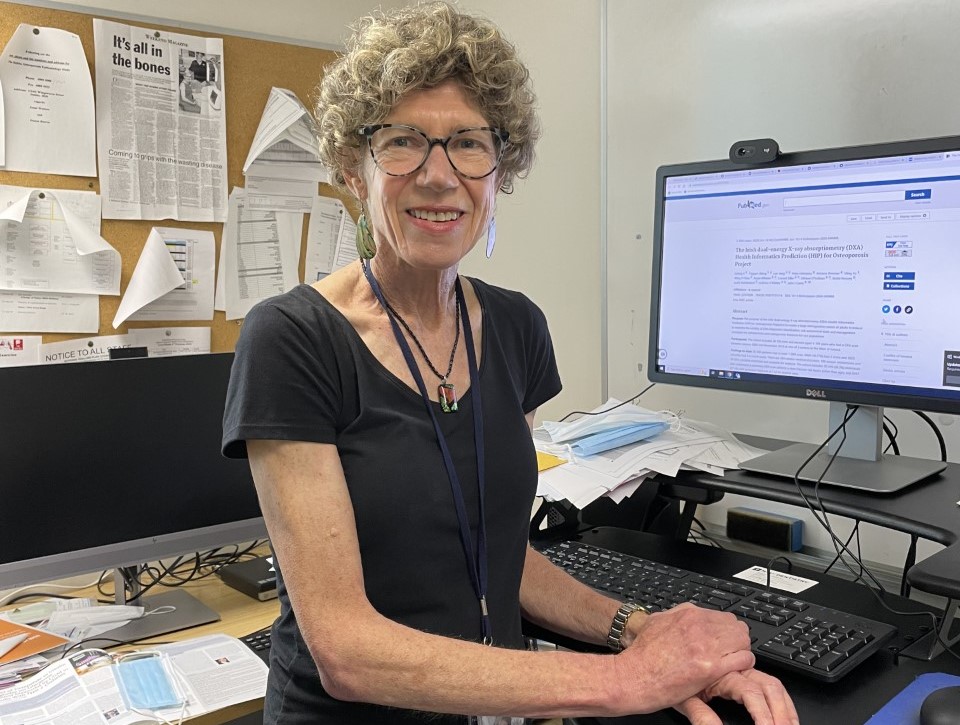A study has found that antiresorptive medications do not have any detrimental effect on cardiovascular risk in high risk patients, write Dana Bliuc, Robert D Blank, and Jacqueline R Center …
Well established association between cardiovascular disease and fracture
Cardiovascular disease and fracture are major public health issues which often coexist in the older population. A systematic review of 70 studies has shown significant longitudinal associations between the presence of cardiovascular disease and future risk of bone loss and fracture and also between the fracture occurrence and future risk of acute cardiovascular events (here, here and here). These findings suggest existence of a causal link, but the mechanistic pathway between cardiovascular disease and skeletal fragility is unknown.
Bisphosphonates have proven effects outside bone
Fracture-preventing medications and in particular bisphosphonates have extraskeletal benefits that lead to improved survival. One of these extraskeletal actions is their affinity for calcified tissues outside bone such as the atherosclerotic plaque. Whether their presence in these tissues leads to vascular benefits is still under investigation. A review of nine clinical studies reported slowed progression of vascular calcification in alendronate and risedronate users.
What is the impact of antiresorptive medication on cardiovascular risk?
It is not yet clear whether the effects of bisphosphonates on vascular calcification might translate into a reduction in the risk of acute cardiovascular events such as myocardial infarction or stroke. Research studies to date have not provided a definitive answer, with some authors reporting a reduction in cardiovascular risk, while others found no association.
Given the association between fracture and severe cardiovascular disease, it is important to explore whether bisphosphonates have a beneficial effect on the risk of acute cardiovascular events in real-world patients with fracture. It is also equally important to investigate whether denosumab — a newer antiresorptive medication with a different mechanism of action from bisphosphonates — could have any cardiovascular effect in high risk patients with fracture.
We conducted a large prospective study including more than 17 000 individuals who sustained a fracture, selected from the New South Wales 45 and Up Study, to assess the relationship between use of bisphosphonates or denosumab and all types of acute cardiovascular events, such as acute myocardial infarction, cerebrovascular accident, angina and arrhythmia.

From the whole cohort of women and men who sustained an osteoporotic fracture after enrolment, we identified 880 individuals who received oral bisphosphonates and 770 who received denosumab in the immediate interval after the fracture. For each treated individual we identified up to two control participants. The control participants had similar age and sex and similar number of cardiovascular conditions as their treated match. Furthermore, the controls were also matched by the site and year of fracture. After matching, we followed the treated cases and the controls and identified all the hospitalisations related to acute cardiovascular events for about four years. We then calculated the cumulative incidence of cardiovascular events for all participants in a pairwise time-to-event analysis.
We were able to successfully match all treated individuals. The incidence of acute cardiovascular events was similar for participants using oral bisphosphonate users and their controls for both women (46 events per 1000 person-years [95% CI, 39–55] v 43 events per 1000 person-years [95% CI, 37–51] for treated and not treated respectively) and men (76 events per 1000 person-years [95% CI, 60–96] v 79 events per 1000 person-years [95% CI, 65–96] for treated and not-treated respectively).
Similar findings were obtained for denosumab and their controls. The incidences of cardiovascular events were similar between women in the treated and not-treated groups (56 events per 1000 person-years [95% CI, 45–69] v 46 events per 1000 person-years [95% CI, 39–54] respectively). For men taking denosumab, the incidence of acute cardiovascular events was on average higher than in controls but the confidence intervals overlap (174 events per 1000 person-years [95% CI, 128–237] v 110 events per 1000 person-years [95% CI, 87–140] for treated and not treated respectively).
Interestingly, in both oral bisphosphonate and denosumab treated groups there was a higher uptake of cardiovascular medication compared with the control groups. This suggested that individuals treated with antiresorptive medication had more severe cardiovascular disease despite a similar number of cardiovascular conditions. This was not surprising given the known association between fracture and cardiovascular disease.
Our results suggest that the use of the most common classes of antiresorptive medications is not associated with acute cardiovascular events in a real-world setting of high risk patients with fracture. This work supports the cardiovascular safety of antiresorptive medication in a cohort of individuals with fracture and leaves open the possibility that they may confer a potential cardioprotective effect.
Implication for clinical practice
Fracture is one of the leading causes of hospitalisation. In Australia, fractures occurred an average of every three minutes in 2022. At an individual level, the impact is even greater. The occurrence of a fracture triggers a cascade of adverse events including further fractures, likely of increasing severity, physical decline, institutionalisation, and premature mortality (here and here).
One of the most puzzling aspects of fracture management is that, despite the presence of effective and safe antifracture medication, more than 80% of high risk patients remain untreated. The presence of other chronic conditions at the time of fracture is another factor contributing to undertreatment to prevent fracture. The findings that antiresorptive medications do not have any detrimental effect on cardiovascular risk in a large group of high risk patients could help increase the general awareness of treatment safety in a real-world setting.
Dana Bliuc is a clinical epidemiologist and holds a Senior Research Officer position at the Garvan Institute and a Senior Lecturer at Faculty of Medicine and Health, University of New South Wales. She has been working on the adverse outcomes of fracture and the role of antiresorptive medication in improving these outcomes.
Robert Blank is a physician scientist who has been at the Garvan Institute for four years. His work spans both laboratory and clinical science, and his most recent position in the United States was as Professor of Medicine and Chief of Endocrinology at the Medical College of Wisconsin.
Prof Jacqueline Center is a Senior Staff Specialist Endocrinologist at St Vincent’s Hospital and co-lead of the Skeletal Diseases Program at the Garvan Institute of Medical Research. She leads the Clinical and Epidemiological Studies Lab at the Garvan where she has been working on clinical and epidemiological studies related to osteoporotic fracture and its outcomes for over 20 years.
The statements or opinions expressed in this article reflect the views of the authors and do not necessarily represent the official policy of the AMA, the MJA or InSight+ unless so stated.
Subscribe to the free InSight+ weekly newsletter here. It is available to all readers, not just registered medical practitioners.
If you would like to submit an article for consideration, send a Word version to mjainsight-editor@ampco.com.au.

 more_vert
more_vert